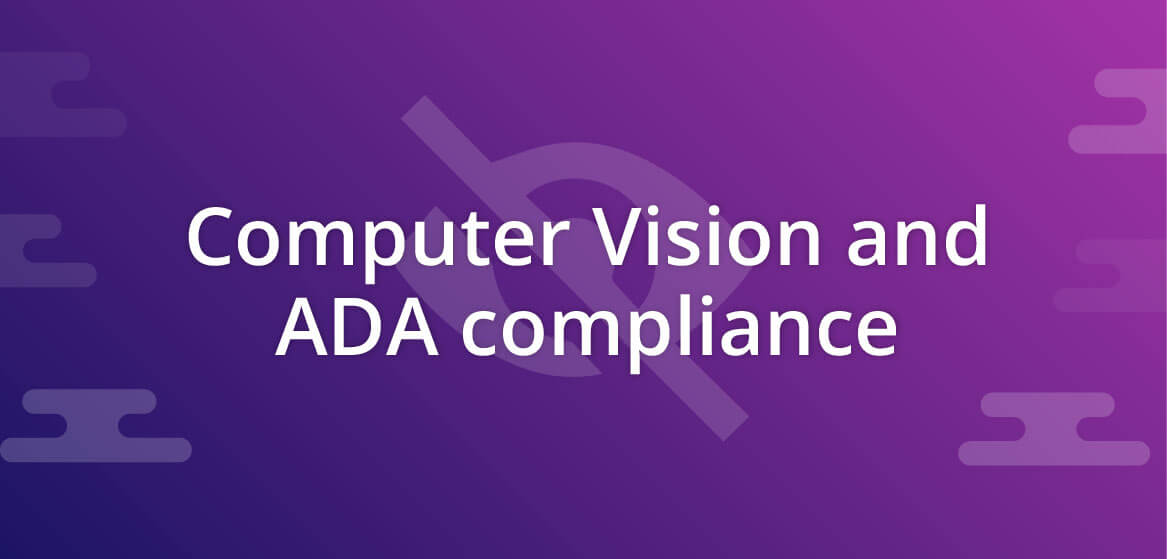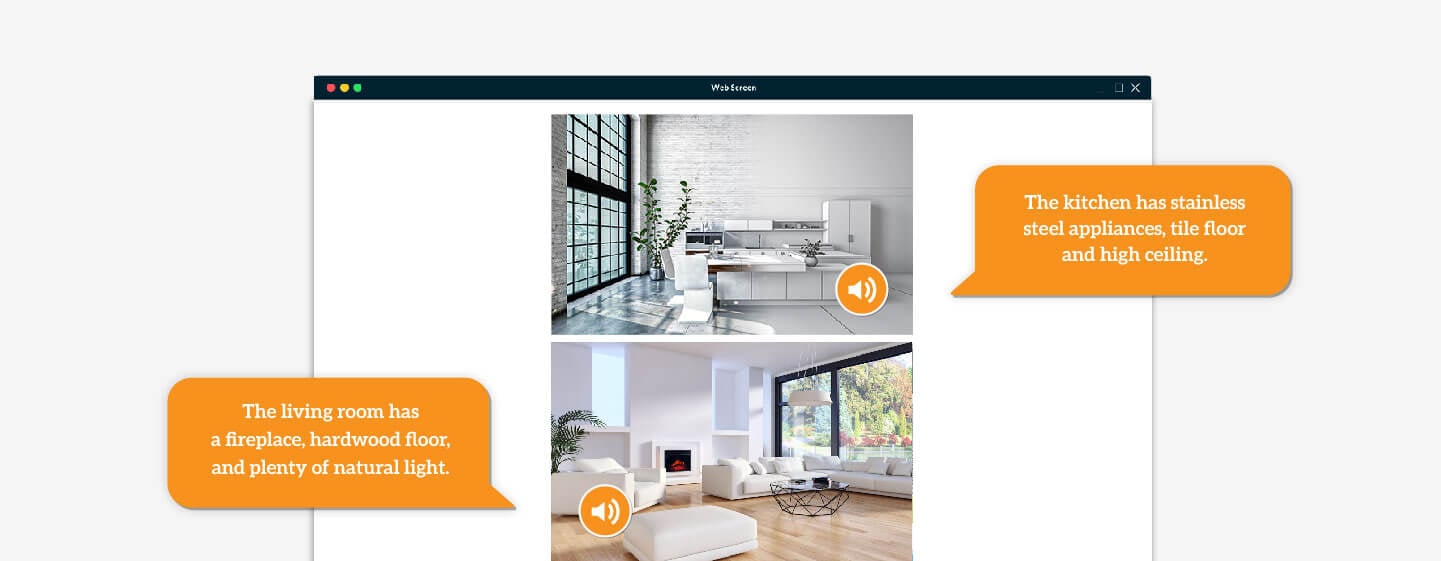You are viewing our site as a Broker, Switch Your View:
Agent | Broker Reset Filters to Default Back to ListHow Computer Vision Helps Portals Comply with the Americans with Disabilities Act
April 30 2018
 A computer-generated voice on Facebook tells a woman viewing a page about an image. She is blind. She's never seen the photos of her family posted on the social media platform before. She smiles and explains in the video that, "...unless you have somebody to describe it to you, even having three words just helps flesh out all of the details that I can't see..."
A computer-generated voice on Facebook tells a woman viewing a page about an image. She is blind. She's never seen the photos of her family posted on the social media platform before. She smiles and explains in the video that, "...unless you have somebody to describe it to you, even having three words just helps flesh out all of the details that I can't see..."
Technologies like Computer Vision are empowering millions of visually impaired Internet users to be able to perceive the world in ways they hadn't been able to before. The technology can also help companies in the United States comply with the Americans with Disabilities Act (ADA), which mandates standards for disabled computer users.
What Is The Americans with Disabilities Act (ADA)?
The United States established the Act in 1990, before the Internet entered the public's consciousness. In its simplest terms, the ADA states that it should be as easy for the disabled to use the services offered by a physical space as it is for those without disabilities.
The courts in America extended coverage of the ADA to web-accessibility in 2000 through a lawsuit disabled computer users brought against Bank of America. Shortly after, customers took Safeway and Charles Schwab to court on the same basis. Target, the department store, paid $6 million in 2008 to settle a class-action suit brought by the National Federation of the Blind. The company also paid nearly $4 million more to cover the plaintiffs' attorney fees and other costs. More than 240 businesses across the country have been sued in federal court over website accessibility since the beginning of 2015.
What Are the ADA's Guidelines for Websites?
Private employers with 15 or more employees must comply with ADA. Public entities at state and local levels are also held accountable, while public accommodations and commercial facilities must adhere to the same standard. If they don't, they can be sued without warning. Unfortunately, the standards for websites are still fluid, established by case law. Regulations built up by case law are based in precedence set by court decisions, one judgement at a time.
Though there is no legal standard, the World Wide Web Consortium published guidelines called The Web Content Accessibility Guidelines (WCAG), version 2.0. WCAG has three levels of standards: A, AA, AAA. AAA is the most rigorous of guidelines, but is the most likely to address all the functions and features of a website disabled users require for ease of accessibility and use.
The Justice Department uses the A and AA levels. The Department of Transportation requires the AA level for airline carrier websites. European countries have adopted WCAG for government web sites, as has Ontario. The U.S. federal government under Section 508 of the Rehabilitation Act has to make its websites accessible, so it is proposing to use WCAG's AA level. Companies can also use the guidelines.

While WCAG is a set of guidelines for broad website accessibility and use, the U.S. Department of Health and Human Services has published specific web-related metadata specifications (Section 508 compliance checklist) that websites should address to be compliant with ADA:
- Every image, video file, audio file, plug-in, etc. has an alt tag;
- Complex graphics have detailed text descriptions;
- The alt descriptions describe the purpose of the objects;
- If an image is also used as a link, the alt tag describes the graphic and the link destination;
- Add audio descriptions;
- The tags must contain an alt attribute.
How Computer Vision Can Help with ADA Compliance
Restb.ai's computer vision technology can recognize and describe the objects and contexts of millions of images on real estate portals in a few seconds. It also provides standardized, descriptive file names. Further, the plug-n-play software delivers Alt-text for images that is rich in descriptors, uses keywords relevant to the real estate property market, and contexts that aid site visitors with individualized requirements. Within minutes of installation on real estate portal, Restb.ai helps disabled users discover a greater level of ease and confidence while searching for a place to call home.
To view the original article, visit the restb.ai blog.









